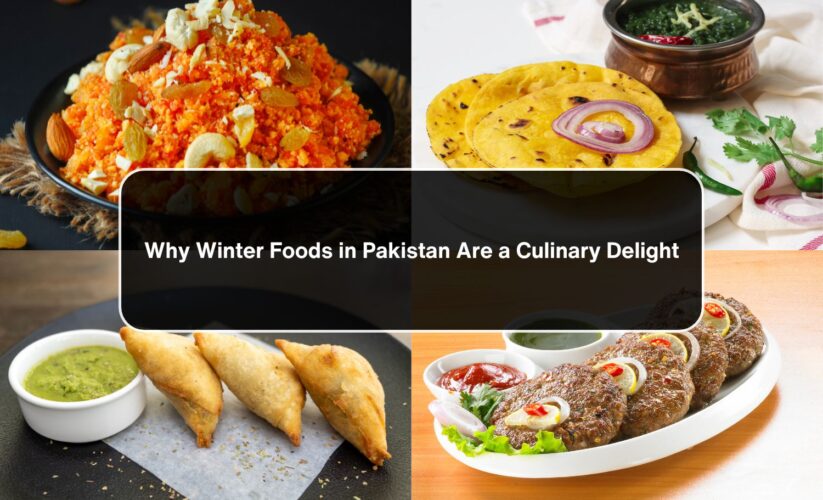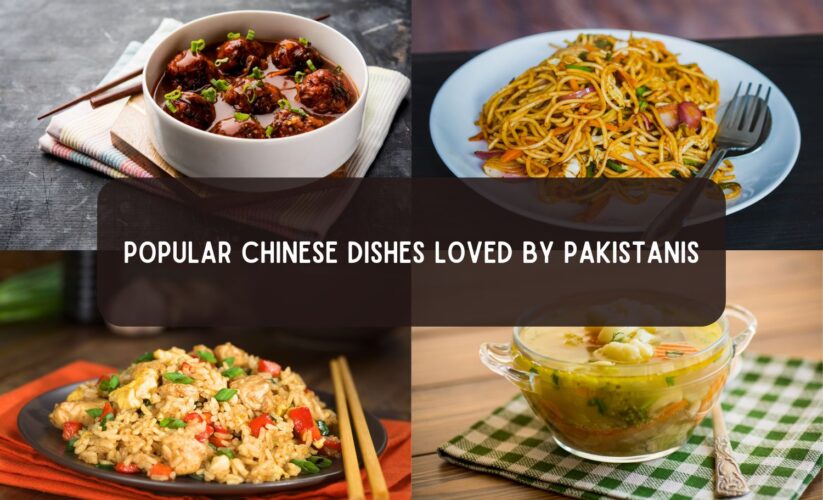
Why Winter Foods in Pakistan Are a Culinary Delight
Winter in Pakistan is more than just a season—it’s a celebration of rich flavors, hearty meals, and comforting delicacies that warm the heart and soul. As temperatures drop, Pakistani households and street vendors come alive with a unique array of dishes specially prepared to suit the chilly weather. These foods not only provide warmth but also bring together families and friends, creating an experience that’s both delicious and memorable. Also, warm up your soul with the rich and hearty winter foods in Pakistan, only at Chef Cooking Resort!
In this article, we’ll take a deep dive into the diverse world of Pakistani winter foods, explore why they are cherished, and highlight some must-try dishes that showcase the culinary richness of the country during the cold months.
1. The Role of Food in Pakistani Winter Culture
In Pakistan, food plays a central role in celebrating seasons, festivals, and everyday life. Winter is no exception. During this time, hearty meals take center stage, with ingredients that are known to generate warmth and boost immunity. Foods rich in fats, proteins, and spices are preferred as they not only satisfy hunger but also help the body combat the cold.
Warmth through Spices
Pakistani cuisine is known for its bold use of spices such as cinnamon, cardamom, black pepper, and cloves. These spices not only enhance flavor but also have warming properties, making them essential in many winter dishes.
2. Popular Winter Dishes in Pakistan
a. Nihari – The Ultimate Comfort Food
One of the most loved winter foods in Pakistan, Nihari is a slow-cooked stew made with beef or mutton. The dish is simmered for hours with a rich blend of spices, resulting in a thick, flavorful gravy. Traditionally enjoyed with naan or khameeri roti, Nihari is a breakfast favorite during winter but can also be enjoyed as a hearty dinner.
Why It’s Perfect for Winter:
- The long cooking time ensures that the meat is tender and infused with spices, making it a warming and satisfying meal.
- The use of spices like ginger, cloves, and black pepper helps to generate warmth and improve digestion.
b. Gajar Ka Halwa – A Sweet Winter Treat
Gajar ka halwa, or carrot pudding, is a quintessential winter dessert in Pakistan. Made with grated carrots, milk, sugar, and generous amounts of ghee (clarified butter), it’s cooked until the mixture thickens and becomes rich and aromatic. Garnished with nuts and served warm, it’s a dessert that delights everyone.
Why It’s Perfect for Winter:
- Carrots are abundant during the winter season, making it an ideal time to prepare this dish.
- The high fat content from ghee provides warmth and energy, while the natural sweetness of carrots makes it irresistible.
c. Sarson Ka Saag with Makki Ki Roti
A traditional Punjabi dish, sarson ka saag (mustard greens curry) served with makki ki roti (cornbread) is a winter staple in many Pakistani households. The dish is prepared by cooking mustard greens with spinach, fenugreek, and spices, resulting in a flavorful and nutritious curry.
Why It’s Perfect for Winter:
- Mustard greens are known for their warming properties and are a rich source of vitamins and minerals.
- The cornbread is hearty and pairs beautifully with the saag, making it a wholesome and filling meal.
3. Street Foods That Define Pakistani Winters
a. Roasted Chestnuts (Bhuni Hui Singharay)
During winter evenings, street corners across Pakistan come alive with vendors selling roasted chestnuts. The warm, smoky flavor of freshly roasted chestnuts is a winter favorite that’s perfect for snacking.
Why It’s Perfect for Winter:
- Chestnuts are rich in carbohydrates, providing energy and warmth.
- They are easy to carry around, making them a popular choice for people on the go.
b. Kashmiri Chai
Kashmiri chai, also known as pink tea, is a luxurious winter beverage made from green tea leaves, milk, and baking soda, which gives it its distinctive pink color. It’s often garnished with crushed nuts and served hot, making it a comforting drink during cold evenings.
Why It’s Perfect for Winter:
- The rich, creamy texture and warm temperature make it an ideal beverage for chilly weather.
- The addition of spices like cardamom and cinnamon enhances its warming effect.
c. Samosas and Pakoras with Chai
Nothing beats the combination of hot samosas or pakoras with a steaming cup of chai during a cold winter afternoon. Samosas are deep-fried pastries filled with spiced potatoes or minced meat, while pakoras are fried fritters made with vegetables or chicken coated in gram flour batter.
Why They’re Perfect for Winter:
- The crispy, hot snacks provide instant warmth and satisfaction.
- Pairing them with hot tea enhances the experience and adds an extra layer of comfort.
4. Ingredients That Define Pakistani Winter Foods
Certain ingredients are commonly used in Pakistani winter cuisine due to their warming properties and nutritional value. Here are a few:
a. Ghee (Clarified Butter)
Used generously in both savory and sweet dishes, ghee is known for its rich flavor and high energy content. It’s a key ingredient in winter desserts like gajar ka halwa and meals like parathas.
b. Dry Fruits and Nuts
Almonds, walnuts, pistachios, and cashews are frequently used in winter dishes and desserts. They are not only delicious but also packed with healthy fats that help keep the body warm.
c. Jaggery (Gur)
Jaggery is a natural sweetener made from sugarcane or palm sap. It’s used in various winter delicacies and drinks for its rich flavor and warming properties.
5. Regional Winter Specialties
Each region of Pakistan has its own set of winter specialties that reflect local tastes and traditions. Here are a few notable mentions:
a. Peshawari Chapli Kebab
Hailing from Khyber Pakhtunkhwa, chapli kebabs are spicy minced meat patties fried to perfection. They are often served with naan and a side of chutney.
b. Sindhi Saag
In Sindh, a variety of saag is prepared during the winter season. Unlike the Punjabi version, Sindhi saag has a slightly tangier flavor and is often enjoyed with rice or flatbread.
c. Balti Soup
In the northern regions of Pakistan, especially in Gilgit-Baltistan, Balti soup is a popular winter dish. Made with meat, vegetables, and local spices, it’s a hearty soup that provides warmth and nourishment.
6. The Social Aspect of Winter Foods
In Pakistan, food is more than just sustenance; it’s a means of bringing people together. Winter foods, in particular, play a crucial role in social gatherings. Whether it’s a family dinner featuring sarson ka saag or a roadside stall serving steaming cups of Kashmiri chai, food fosters connection and warmth during the cold months.
7. Health Benefits of Pakistani Winter Foods
Many winter foods in Pakistan are not only delicious but also offer significant health benefits:
- Boost Immunity: Ingredients like garlic, ginger, and turmeric, commonly used in winter dishes, have immune-boosting properties.
- Provide Energy: High-calorie foods like nihari and gajar ka halwa provide the necessary energy to keep the body warm and active during winter.
- Improve Digestion: Spices such as cumin, black pepper, and cloves aid in digestion, making hearty winter meals easier to process.
Conclusion
Winter foods in Pakistan are a delightful blend of flavor, tradition, and comfort. From rich, slow-cooked stews to sweet treats and warm beverages, these dishes not only satisfy the palate but also provide the warmth and nourishment needed during the cold months. Whether you’re indulging in a bowl of hot and sour soup or savoring the sweetness of gajar ka halwa, each bite tells a story of Pakistan’s vibrant culinary heritage.
So, this winter, dive into the world of Pakistani cuisine and savor the dishes that define the season—you won’t be disappointed! Moreover, discover flavors, savor traditions, and ignite your culinary passion with Chef Cooking Resort Blogs!





